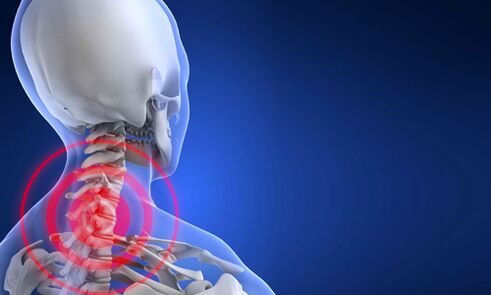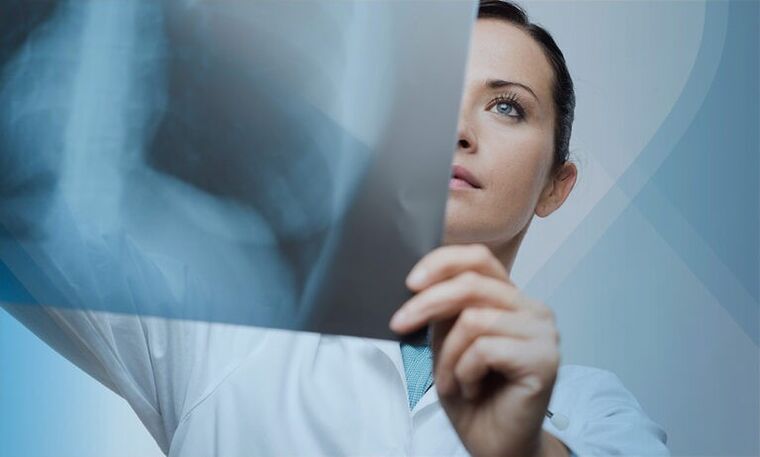Currently, not only retirees are susceptible to the disease, but young people over the age of 25 are also at risk. Osteochondrosis affects different areas and departments: the lower back, the neck, the chest.

Causes and stages of cervical osteochondrosis
Osteochondrosis occurs due to the following factors:
- excessive physical exertion on the spine;
- hernia, injuries to the cartilage discs;
- nervous tension, stressful situations;
- insufficient intake of necessary vitamins, minerals and trace elements, which slows down the metabolic process and leads to the development of osteochondrosis;
- sedentary lifestyle;
- presence of flat legs;
- sleep on a soft pillow or mattress;
- frequent uncomfortable sitting positions while sitting;
- carrying one side of the bag;
- circulatory disorders and muscle cramps.

Each cause, taken together or separately, creates favorable conditions for the development of osteochondrosis. Women are more prone to this disease and high heels and a bag on one shoulder make the situation worse, pregnancy is no exception. Failure to follow the rules recommended by your doctor will result in serious violations of your mother's health.
During stress on the cervical region, cracks form in the cartilage, dislocations of the cartilage, and pinching of the nerves and spinal cord are possible. There are blood vessels along the neck region that supply the brain with the necessary substances, the compression of which leads to serious health problems. If you do not treat osteochondrosis of the cervical spine at home, the person’s condition worsens, the distance between the vertebrae narrows, and then the bone tissue grows, causing severe pain and discomfort. There are several stages in osteochondrosis of the neck:
- The first stage is characterized by the appearance of cracks in the fibrous ring, possibly by the core shifting to the side. Symptoms may include shooting and sharp pain, sudden muscle cramps, dilated pupil, and numbness of the tongue - an indicator of the initial stages of nerve injury. Experts also often diagnose Wright's and Naffziger's syndromes, which are characterized by raised numbness of the hand, tingling, pinching of nerve endings in the clavicle region. Persistent neck pain, often during physical exertion, characteristic cracking of the affected areas, tirelessness and tinnitus.
- During the second stage, the gap between the vertebrae becomes even narrower, which leads to the drying of the fibrous ring, and the rupture of the capsule is accompanied by an inflammatory process. Without proper treatment, osteophytes occur - an increase in bone tissue.
- The third stage is characterized by complete rupture of the cartilage tissue, prolapse of the nucleus may occur, which causes the development of a disc herniation. Symptoms that help to recognize the stage 3 of the disease are often acute pain in the neck region, frequent numbness of the limbs, inability to control the arm or leg, this is accompanied by dizziness and headache, loss of consciousness.
Diagnosis and treatment of the disease

If cervical osteochondrosis is suspected, you cannot self-cure. The symptoms of some diseases are very similar to each other, self-medication can lead to deterioration, wheelchairs.
The disease is always easier to eradicate in the early stages of development, when it has not yet intensified, and it does little damage to the internal organs.
The loss of valuable time is threatened by a long treatment consisting of medication, physiotherapy practices, and adherence to daily routine.
If symptoms of the disease are detected, a specialist should be contacted - a neuropathologist who will be able to diagnose, determine damage to nerve endings, and prescribe additional x-rays, ultrasound of the vessels, and tomography. Diagnosis is based on MRI and radiography.
In the early stages of the disease, the patient can treat osteochondrosis of the neck at home, visit a specialist at a certain time, and follow his or her advice and instructions completely.
Medication consists of taking certain medications that your doctor must prescribe, depending on the stage of the disease and the general condition of your body, indicating the dosage:
- NSAIDs, reception lasts up to 2 weeks;
- sedatives avoid complete depletion of the nervous system, including motherwort tincture, valerian;
- when edema occurs, the doctor prescribes diuretics that reduce the swelling of the inflamed area;
- due to the intake of B vitamins, the metabolic processes in the affected tissues of the nervous system are normalized and neuromuscular conduction is improved;
- muscle relaxants relax muscles prone to cramps;
- taking chondroprotective drugs to improve the function of intervertebral discs and cartilage tissue;
- in addition, the use of ointments and creams is prescribed by a specialist, they relieve pain, warm the tissue and help relieve the human condition.
If the patient feels unwell, bed rest is mandatory. Thanks to the correct position of the body, the cartilage discs relax and the pain is reduced. Bed rest lasts for up to 2 days, after which the patient must move.
Tips to relieve the human condition
Doctors often hear the question of how to treat cervical osteochondrosis at home. If the patient is in the acute stage of the disease, it is recommended to perform light breathing exercises and more exercises to relieve the seizures.
By improving well-being, a series of exercises can be performed in a sitting or standing position under the supervision of an experienced professional. If a person has learned all the necessary rules and strictly follows them, he or she can perform therapeutic exercises at home.
The head consists of several smooth turns and tilts, and then the load is gradually increased. If sudden muscle cramps occur, a light massage should be performed that does not cause pain or discomfort.
In good health, for preventive purposes, experts recommend visiting an experienced massage therapist twice a year. Not only is it able to warm up the muscles properly and quickly, but it also qualitatively removes small salt deposits and develops joints and vertebrae.
After consultation with your doctor, it is permissible to use the Glisson loop, which consists of several straps attached to a hook. They allow the head to be supported and relieve neck tension. Diet plays a major role in the treatment of cervical osteochondrosis. Experts advise excluding from daily consumption products that can increase muscle tone and cause cramps - coffee, tea, alcoholic and low-alcohol drinks, smoked products and spices. A person with osteochondrosis has the following benefits:

- foods rich in fiber, phytochemicals and antioxidants not only improve the general condition of the patient, but also have a positive effect on the vertebrae and cartilage tissues: these are fresh fruits and vegetables, legumes in any form, cereals;
- protein products - milk and its derivatives, any nuts, eggs, dietetic and lean meats and fish, beef;
- products containing unsaturated fatty acids - fatty species of sea fish, flaxseed, lightly fried and dried;
- products high in calcium - sour milk products, mineral water.
If someone is not in the acute stage, it is still better not to take risks and not cramp back on the affected tissues due to eating the wrong food. Adequate plain carbonated water should be drunk, the diet should be balanced, daily exercises should be performed from therapeutic exercises that not only weaken and relieve tension in the affected body areas but also have a strengthening effect on the patient’s body. .
You should relax at short intervals while working, have a quick self-massage and pay attention to the correct posture.
The danger of self-healing

In order not to put yourself at great risk, you don’t have to self-heal. Only an experienced professional will be able to understand the disease, find out the stage of osteochondrosis, take action to eradicate the disease, and prescribe proper and qualified treatment. Some diseases are quite insidious and can easily disguise themselves as others.
X-ray, ultrasound, magnetic resonance imaging helps to check the structure of the cartilage discs, identify problems and find the right solution to alleviate the patient's condition. If a person self-heals, he or she may miss the initial stages of the illness and expose his or her body to even greater destruction. Uncontrolled intake of drugs damages not only the gastrointestinal tract but also the liver and kidneys, which removes toxins and increases the purity of the blood.
After consulting your home doctor, you can use your own herbal and herbal decoction, which enhances the effect of ointments and preparations:
- Celery: 1 tsp. The crushed root of the plant is poured into 1 liter of warm water and left to stand for 8 hours, after filtration 1 tsp. 3 times a day after meals. Celery seeds: 1 tbsp. l. pour 0, 5 liters of boiling water, insist for 2 hours and take 1 tbsp. l. 3 times daily before meals.
- Fresh horseradish or cabbage leaves, pre-crumpled, smeared on sore spots, topped with a warm scarf or shawl on top, and replaced as needed.
Expert recommendations for the prevention of osteochondrosis
The most common mistake many patients make is the persistent belief that the disease will go away on its own.
Doctors say that such an attitude to health has a detrimental effect on a person’s condition and exacerbates the course of cervical osteochondrosis.
The cure consists not only of eliminating the pain, discomfort, and some symptoms, but also of restoring the damaged vertebral and cervical discs, narrowing the arteries leading to the brain, and maintaining human well-being.
The healing process is quite long and requires a lot of perseverance, effort and help from relatives and friends, but the result allows you to feel free, not addicted to medication and enjoy life.

























